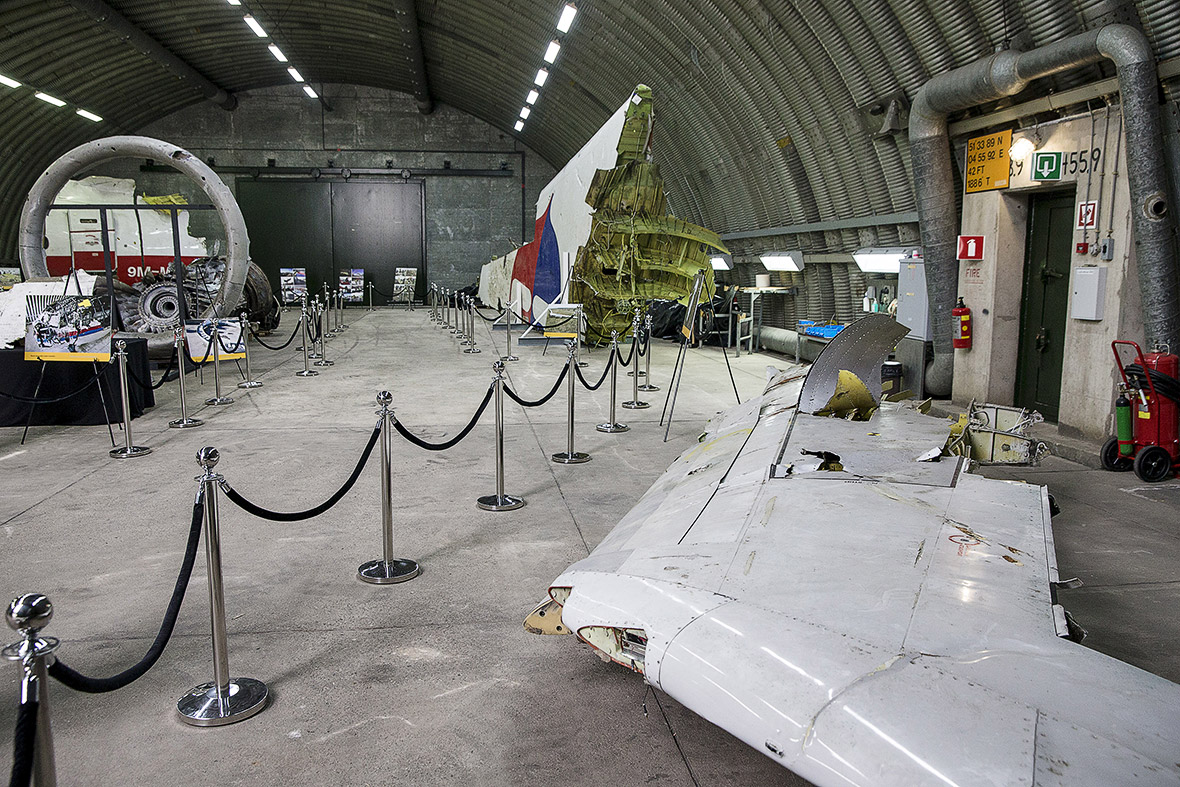MH17 plane reconstructed from fragments of wreckage recovered from crash site in Ukraine [Photos]
Dutch investigators unveiled a ghostly reconstruction of the forward section of MH17, the Malaysian airliner shot down over Ukraine in July 2014. Some of the nose, cockpit and business class of the Boeing 777 were rebuilt from fragments of the aircraft recovered from the crash scene and flown to Gilze-Rijen air base in the Netherlands. Journalists fell silent as the reassembled wreckage, much of it twisted and riddled with holes, was presented.

The reconstruction was the most intricate part of one of the most complex air crash investigations in history, involving the recovery of thousands of fragments of wreckage from across 50 square kilometres (19 square miles) of a war zone in eastern Ukraine. With fighting raging around the wreckage in the weeks after the July 2014 crash, authorities abandoned the standard practice of examining the wreckage as it lay on the ground. Instead, they verified the wreckage using the many photographs documenting the crash site, and brought it by road, rail and air, to a hangar at the Dutch Gilze-Rijen airforce base where it now lies, assembled on a steel wire lattice. First, an outline of the aeroplane was sketched on the floor of the hangar and then relevant wreckage was fitted within it, allowing a full size reconstruction using data from Boeing and a similar 777-200 scanned by police.
The crumpled metal shows holes punched in the cockpit by the Buk shrapnel, the tears where the cockpit was wrenched from the rest of the fuselage. Items of wreckage are marked with police evidence tags. Even the shattered windshield was refitted. The trace left by the puncture holes as shrapnel passed through allowed investigators to conclude it had radiated out from a small point a metre from the left upper side of the cockpit – the point where the warhead detonated. The sound of that detonation was recorded at infinitesimally different times on the four microphones in the cockpit, allowing investigators to triangulate the source of the sound more precisely, offering further corroboration.
The official Dutch Safety Board report on the downing of MH17 says a missile exploded less than 1m outside the cockpit, breaking off the forward section of the plane. Safety Board chairman Tjibbe Joustra said the 15-month investigation found the warhead was that used on a Buk surface-to-air missile system.
The report said the missile's impact was instantly fatal only to the three crew members in the cockpit of Malaysia Airlines flight 17. The rest of the crew and the passengers died due to decompression, reduced oxygen levels, extreme cold, powerful airflow and flying objects. It added: "It cannot be ruled out that some occupants remained conscious" during the 60 to 90 seconds before the plane crashed.











The report identified an area of 320sq km from which, it said, the missile was launched. Though it declined to comment further on the exact launch site, all the territory within the area it identified was in rebel hands at the time of the July 2014 crash. Russia has contended that if the plane was brought down by a missile, it must have been launched by Ukrainian government forces. The report said the plane should never have been flying there as Ukraine should have closed its airspace to civil aviation. It says "nobody gave any thought" to the risk. The report says states in civil conflict must do more in the future to protect passenger planes.
© Copyright IBTimes 2025. All rights reserved.




















